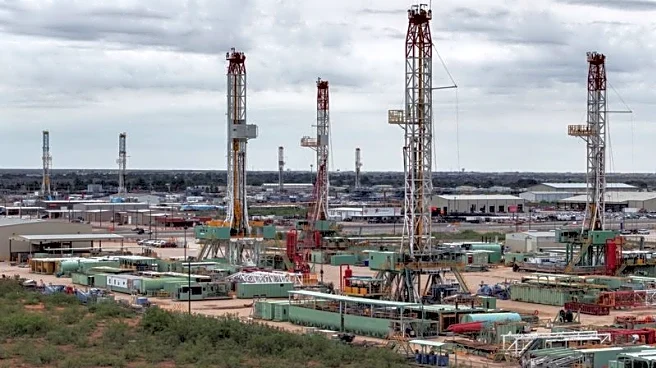What's Happening?
The U.S. oil industry is experiencing significant challenges, with thousands of workers laid off and billions in spending cuts due to declining oil prices and industry consolidation. The U.S. oil rig count has dropped significantly, indicating reduced future drilling activity. Major companies like ConocoPhillips and Chevron have announced substantial workforce reductions. The decline in international oil prices has brought them close to breakeven for many U.S. companies, prompting budget cuts and layoffs that could limit future production.
Why It's Important?
The reduction in U.S. oil output growth could weaken the country's influence in global oil markets and complicate President Trump's energy dominance agenda. The layoffs and budget cuts may impact the U.S. economy, particularly in regions dependent on oil production. The situation highlights the vulnerability of the U.S. oil industry to price fluctuations and the need for strategic planning to maintain production levels and market share. The industry's challenges could have broader implications for energy policy and economic stability.
What's Next?
The industry may need to focus on stabilizing oil prices to resume drilling operations effectively. Stakeholders, including policymakers and industry leaders, will be monitoring the situation closely to assess the impact on production and market dynamics. The U.S. may need to consider strategic measures to support the industry and address the challenges posed by declining prices and reduced output growth.
Beyond the Headlines
The situation underscores the importance of diversification and innovation in the energy sector to mitigate the impact of price volatility. The industry's reliance on traditional oil production methods may need to be reevaluated in favor of more sustainable and resilient approaches. The challenges faced by the U.S. oil industry could prompt discussions on energy policy and the transition to alternative energy sources.












